Learn how to divide and analyze large images in Deep Block
Splitting up large images is an essential and crucial process in effectively analyzing high-resolution photographs.
Find out about this reason in the following articles.
Now, let’s learn how we can analyze LARGE images during the inference process.
Visit https://app.deepblock.net/deepblock/store/project/plilk8byvlq664oxt to easily follow the step-by-step instructions provided in this article.
Step #1 - Prepare a model
- If you are seeking to create a unique model using your own images from the ground up, read this article.
- If you want to leave it to someone, contact us.
- Or, try using a project trained by someone else.
- In this article, we copied the project titled "The_power_of_tiling" for explanation.
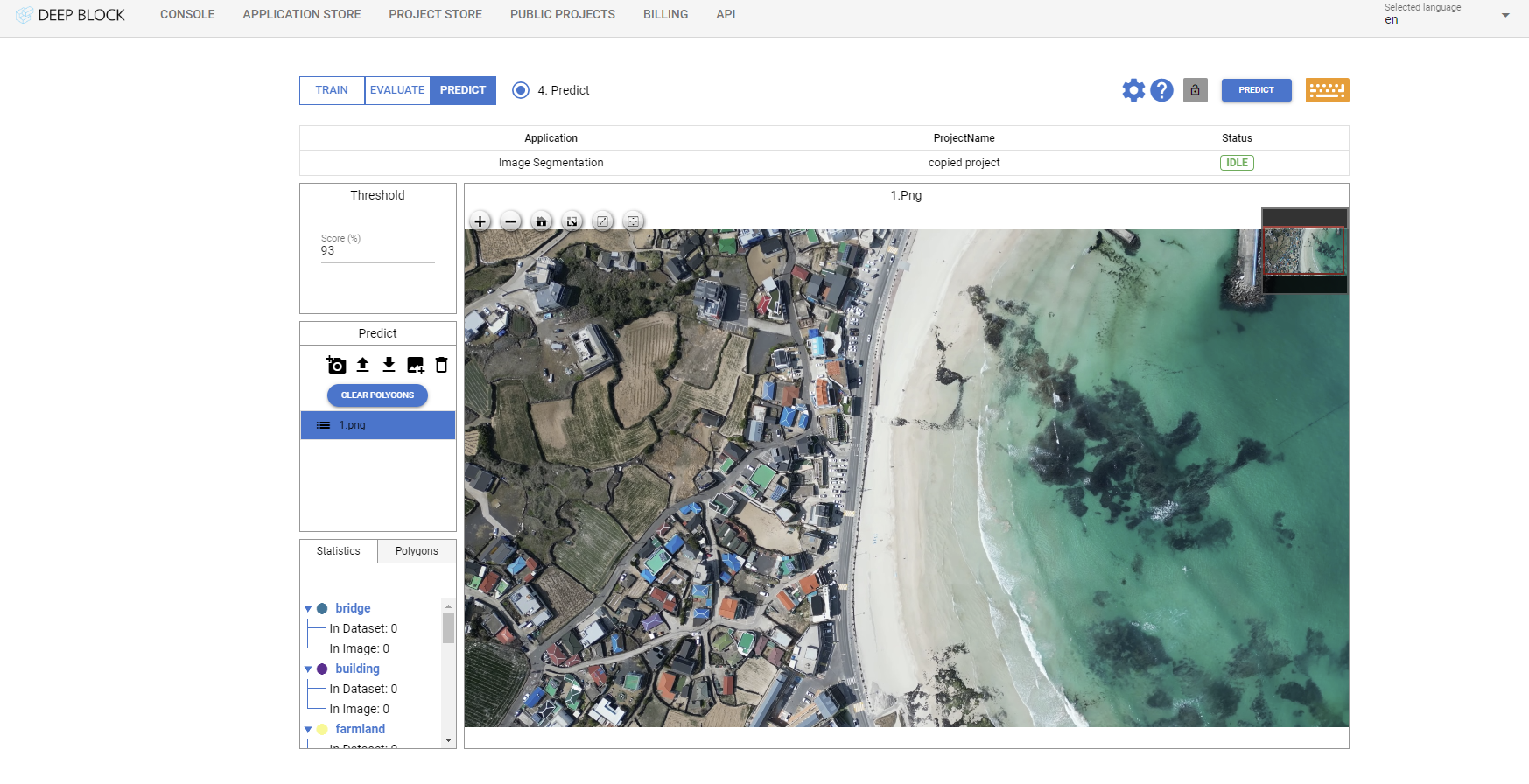
Step #2 - Zooming in
- When analyzing a large image, we must divide the image into smaller pieces and analyze it. To understand reasons for this and why it is difficult, check out this article.
- Just like humans, the latest computer vision models cannot identify objects that are not visible to the eye, but are good at identifying visible objects.
So, if you want to analyze high resolution images, you need to divide the large image into UNDERSTANDABLE pieces. - You can find the appropriate unit piece size by zooming in.
First, Enlarge the image in the image viewer until the objects you are looking for are clearly visible.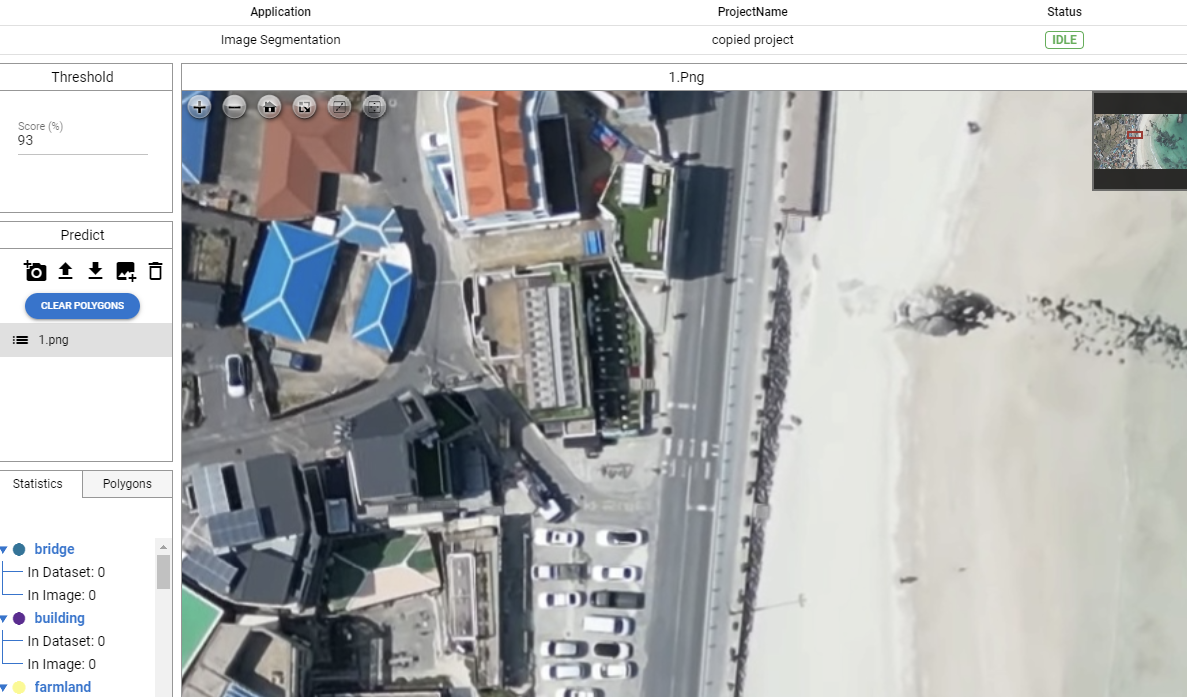
Step #3 - If possible, check the training data you used.
- In this example, we will analyze 4k high-resolution drone photos using a machine learning model trained by others.
- If you open the training image in train mode, you can get a hint that we can enlarge the inference image like the train image's tile size.
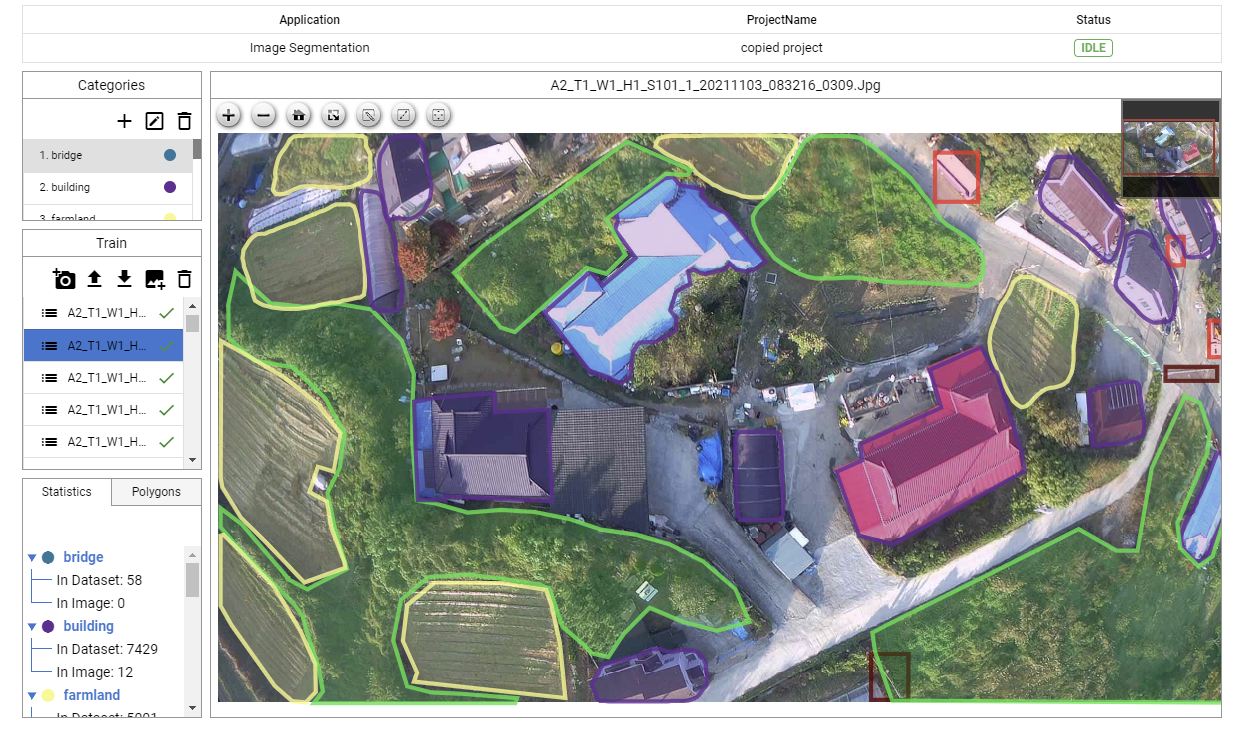
- Here, the train image is a low resolution image that is not divided. The division configuration of the training images was 1 x 1.
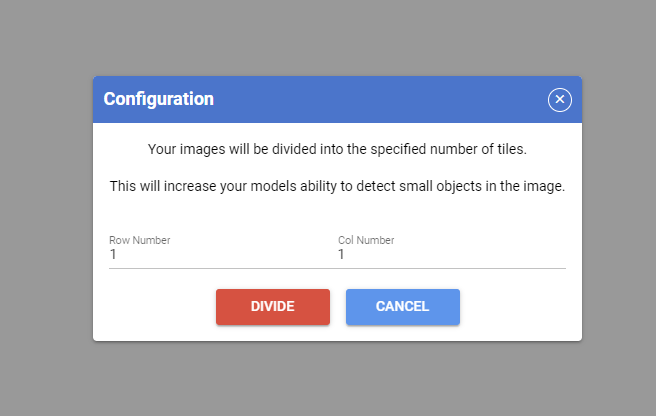
- In this case, we can just run inference to the extent we zoomed in earlier.

Step #4 - Minimap
- Take a closer look at the image and check the mini-map located in the top right corner.
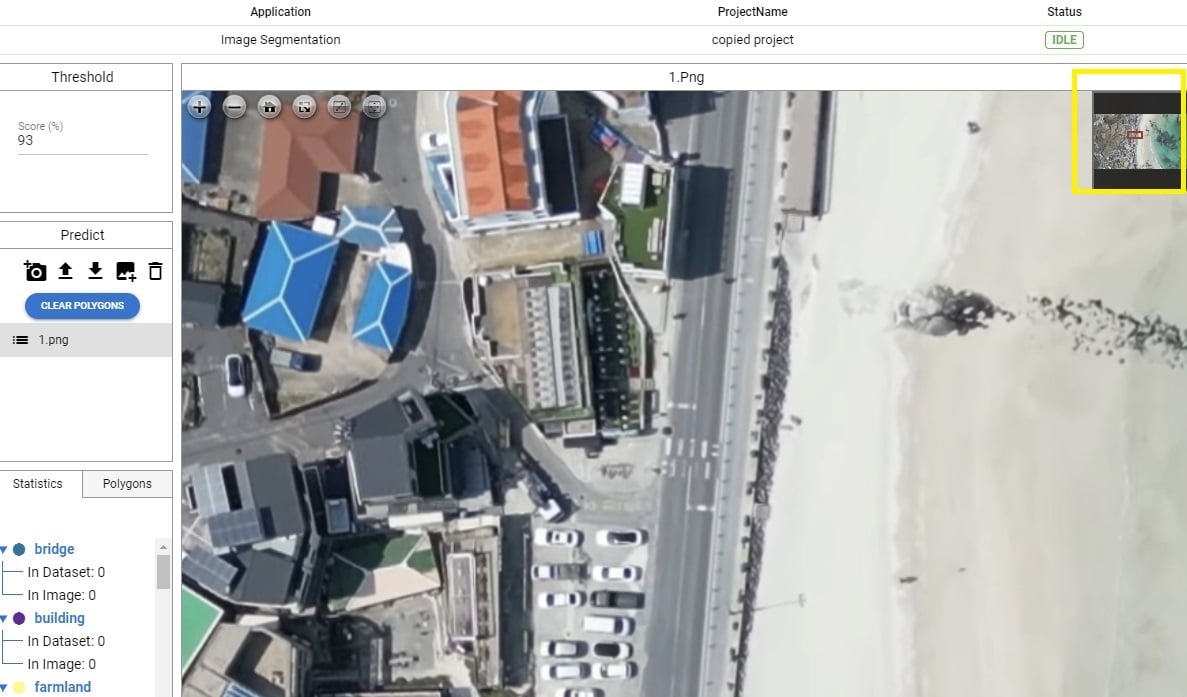
- After enlarging the image, and through calculating the zoom scale, we can set an appropriate division constants. Now, for our high resolution images, let's learn how to calculate the division constants.
Step #5 - How to divide
- Look at the minimap carefully.
If you split the image into slightly larger than the minimap window, the machine learning model will also break down and analyze your high resolution image. In this case, row would be 4, and the column would be 5.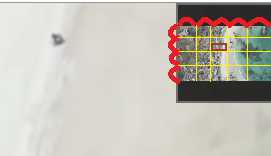
- Press the "Configuration" button.
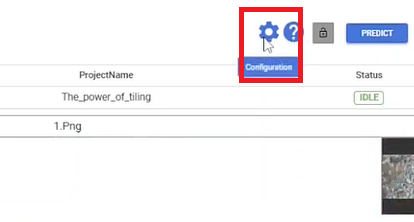
- Set the division constants.
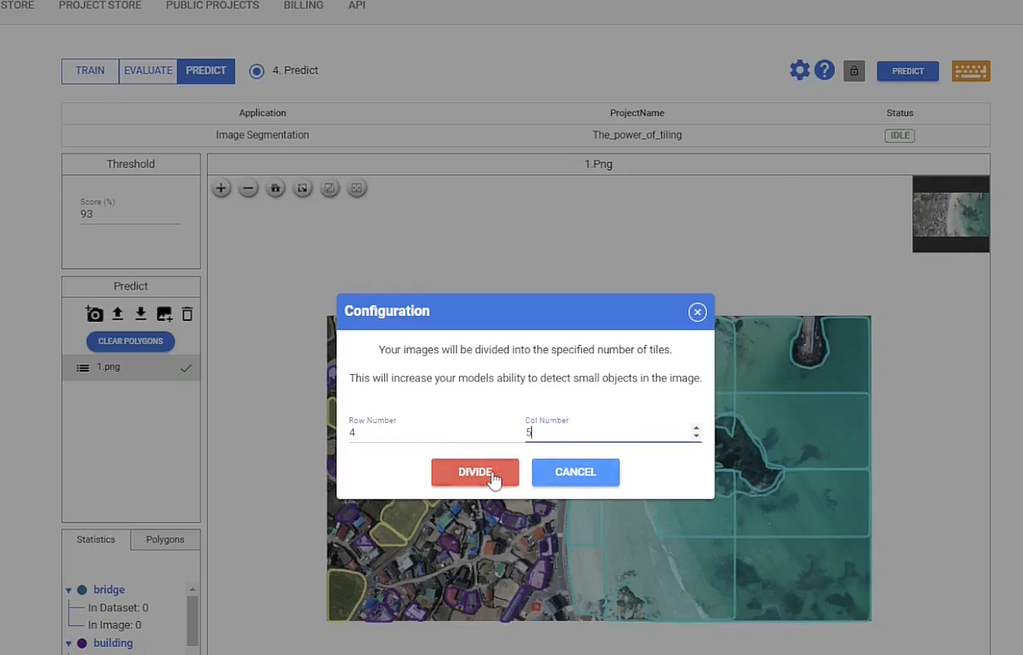
- And click DIVIDE button to finish dividing the image for inference.
Step #6 - Summary
- The image pieces that the model will analyze will look something like this.
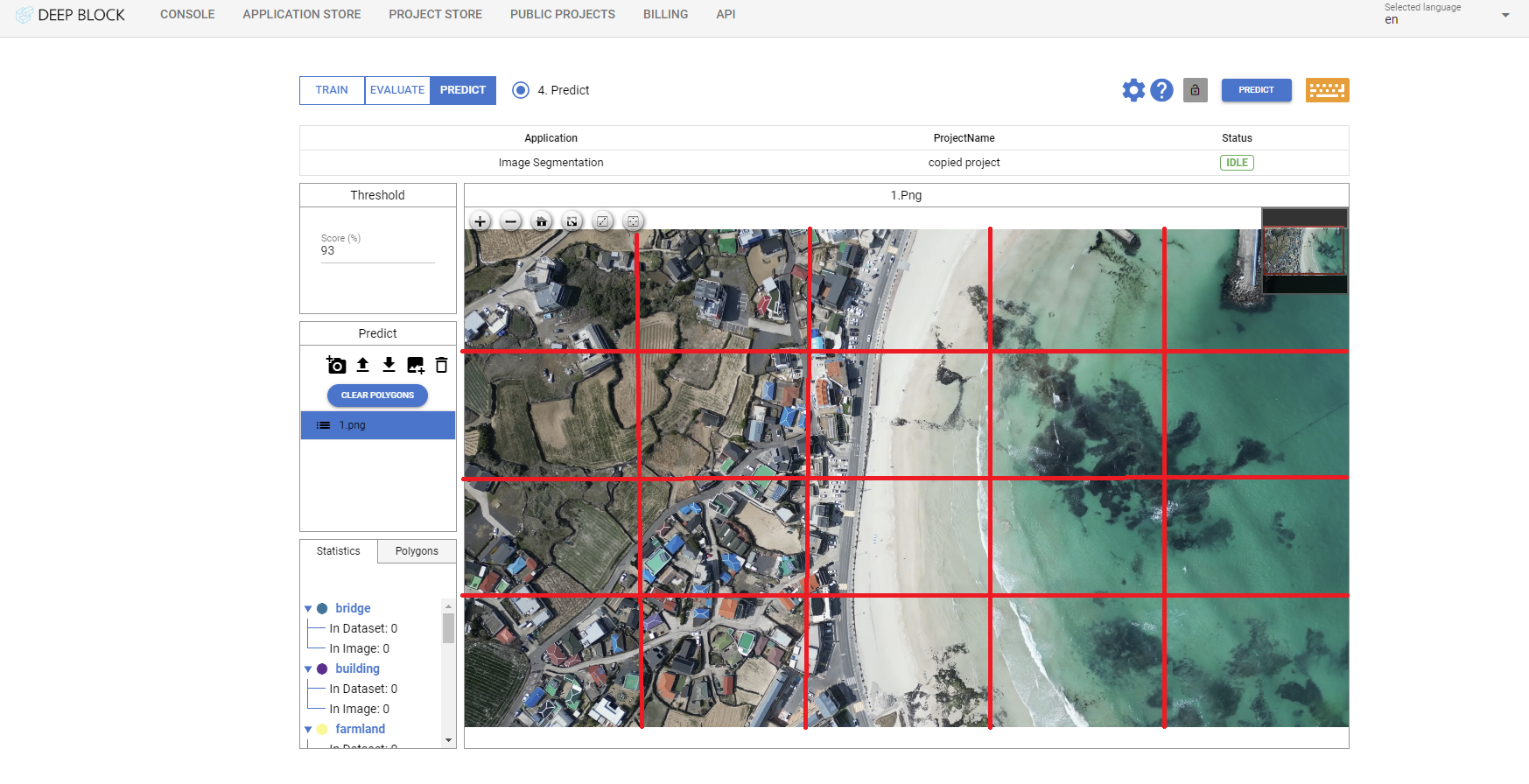
Step #7 - Inference
- Click the "Predict" button and wait. Your model will be able to analyze the 4k image well.
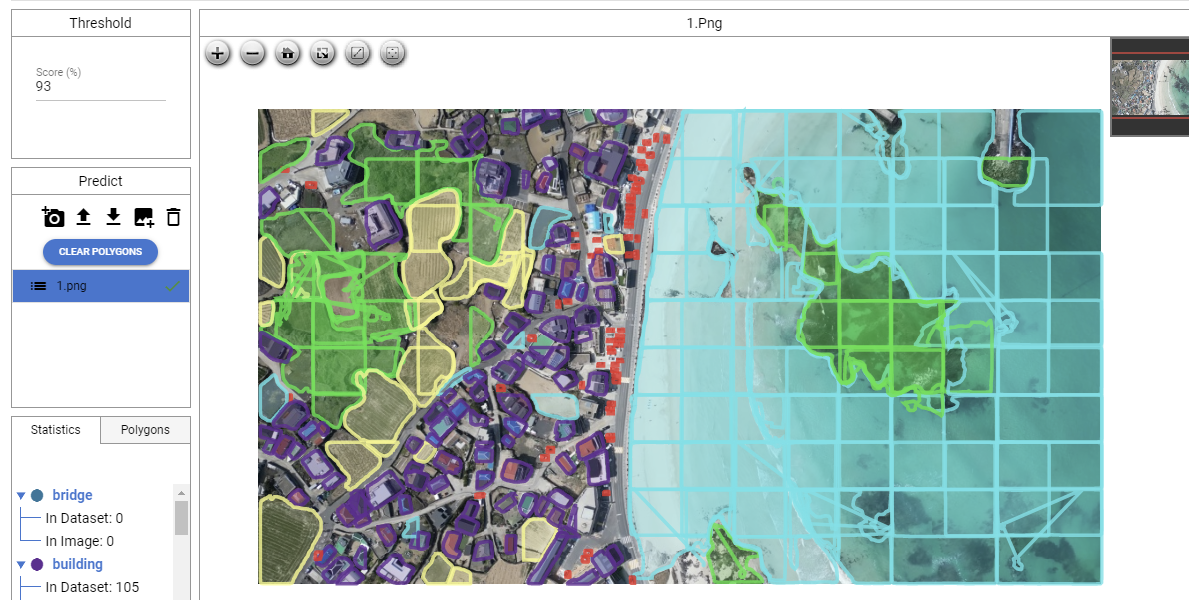
Performance comparison
- Without division, you will find almost nothing in the image, like this:
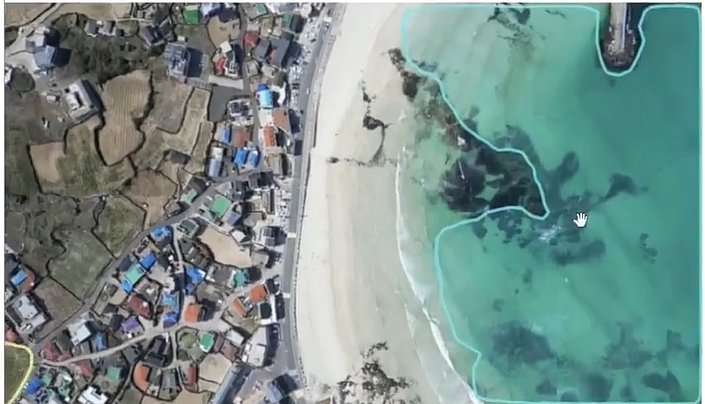
- However, if you divide the image into 2 x 2, you can analyze the image a little better, as follows:
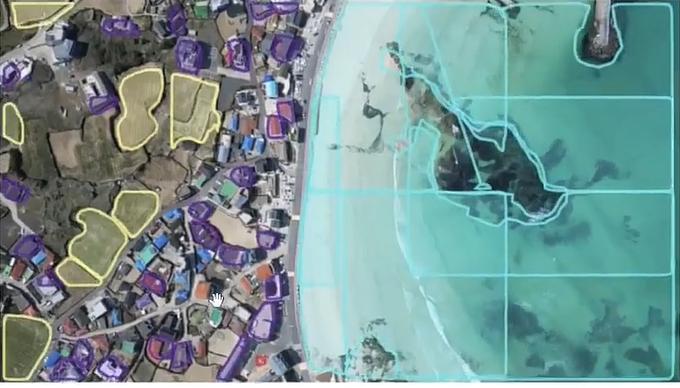
However, small cars are still not found. - Finally, by dividing the image into 4x5, you can analyze the image quite accurately.

What are those squares?
This one no longer exists!!!

